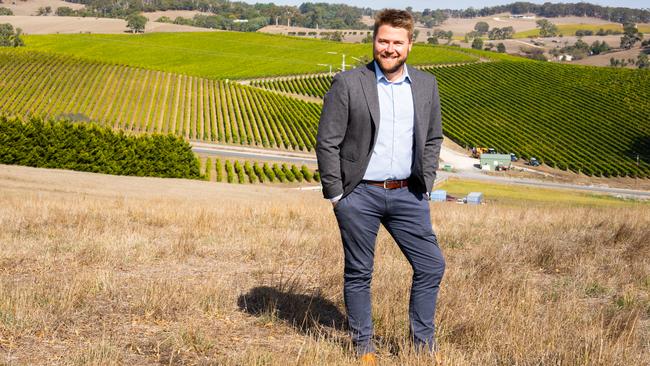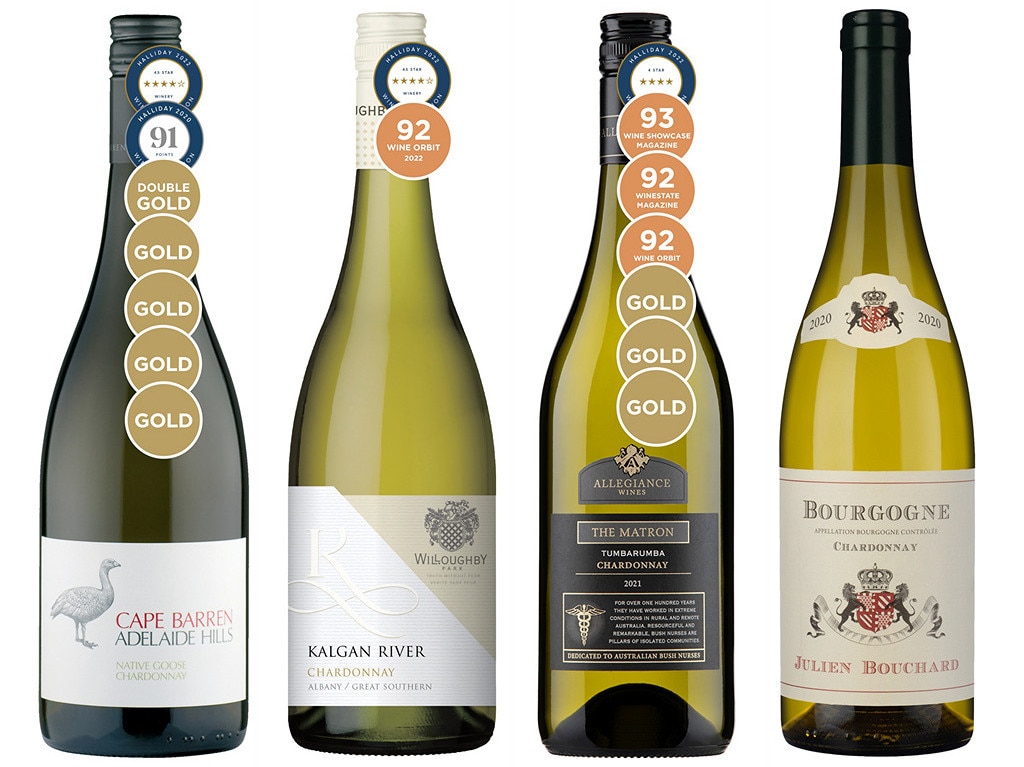The winegrape crush has pulled back from last year’s record, but white prices continue to climb
Price increases for white winegrapes are expected to hit double digits as consumer demand for chardonnay and other white wines goes ‘gangbusters’.
Price increases for white winegrapes are expected to push into the double digits next year as consumer demand for chardonnay and other varietals continues to grow, the chief executive of one of Australia’s premier white producers says.
This comes as Wine Australia’s National Vintage Report, released on Tuesday, has estimated the total winegrape crush from the 2022 harvest at 1.73 million tonnes.
This figure is 13.5 per cent below the record of 2.01 million tonnes crushed last year, and 2 per cent below the 10-year average of 1.78 million tonnes.
The reduction is equivalent to about 190 million litres of wine. The value of the harvest fell further, down an estimated 22 per cent, or $335m, to come in at $1.21bn.
The average winegrape purchase price fell by 10 per cent to $630 per tonne, but splitting that into reds and whites tells a different story.
Red winegrape prices fell by 15 per cent to $707 per tonne, while the average value for whites was up 2 per cent to $548 per tonne.
This is the highest level since 2008, Wine Australia says, adding that the price of white grapes has increased every year since 2014.

Red grape prices have fallen for the past two years from a peak of $871 per tonne in 2020, but were still higher in 2022 than in 2017, or the preceding eight years.
Jared Stringer, the chief executive of Adelaide Hills winery The Lane Vineyard and former president of the Adelaide Hills Wine Region, said the 2022 vintage was high quality and demand for white grapes was intensifying.
“2022 was outstanding, another really good follow up from 2021 which was an incredible vintage, so we’ve been really lucky to string a few together since the bushfires (in 2019/20),’’ Mr Stringer said.
“Yields across the board were probably down anywhere from 15-20 per cent but that was quite localised ... but on the whole, quality was absolutely outstanding.’’
Mr Stringer said he was not surprised to hear that white winegrape prices had continued to appreciate, with some of the major wine companies competing with their smaller counterparts for premium product.
“It appears that Adelaide Hills fruit has never been in more demand,’’ he said. “There are a huge amount of external companies buying into the Adelaide Hills, anecdotally.
“Brands like mine at The Lane Vineyard, we’re competing with some of the bigger guys who are really chasing down as much fruit from the Adelaide Hills as they can.’’
Mr Stringer said while red wine producers had taken a hit, particularly due to the closure of the Chinese market, white sales had been travelling well on the back of domestic sales.
“Chardonnay, sauvignon blanc and all of those white varieties are absolutely going gangbusters,’’ he said.
Mr Stringer said he expected that white prices would likely experience double digit increases next year.
“I’ve had to lock in forward contracts for the next three to five years for our business and the prices are just going through the roof,’’ he said.
“I think you’ll see, certainly in the next vintage report, that white price is going to skyrocket, I think we’ll see that closer to 10 per cent easily.”
The value of red winegrapes from the warm inland regions took the largest tumble this year, down 30 per cent from $547 per tonne to $384 per tonne.
In contrast, white grapes from the same region held up, up $2 per tonne to $419.
“For the first time since 2005, the average value for white varieties from the warm inland regions was higher than that of reds,’’ Wine Australia says.
In terms of volume, Wine Australia said the reduction in tonnage was likely caused by a combination of seasonal influences, capacity limitations and “adjustments made by winemakers to market conditions’’.
“After a record-high vintage in 2021, a lower yield in general was expected due to reduced cropping potential,’’ the Vintage Report says.
“This natural variation was compounded by a number of significant seasonal effects - in particular heavy widespread spring and summer rainfall across much of the eastern half of Australia.
“Apart from seasonal effects, the 2021-22 season was challenging as a result of capacity limitations going into vintage following the record harvest in 2021, as well as Covid-19-related labour shortages, reduced exports to China and shipping disruptions, delays and escalating costs, which have been so severe they have been described as causing a ‘paradigm shift’ for the wine industry.
“Restricted winery tank capacity, together with reduced global demand and prices for red wines may have resulted in wineries and growers reducing overall production and/or intake of grapes - particularly red varieties.’’







To join the conversation, please log in. Don't have an account? Register
Join the conversation, you are commenting as Logout